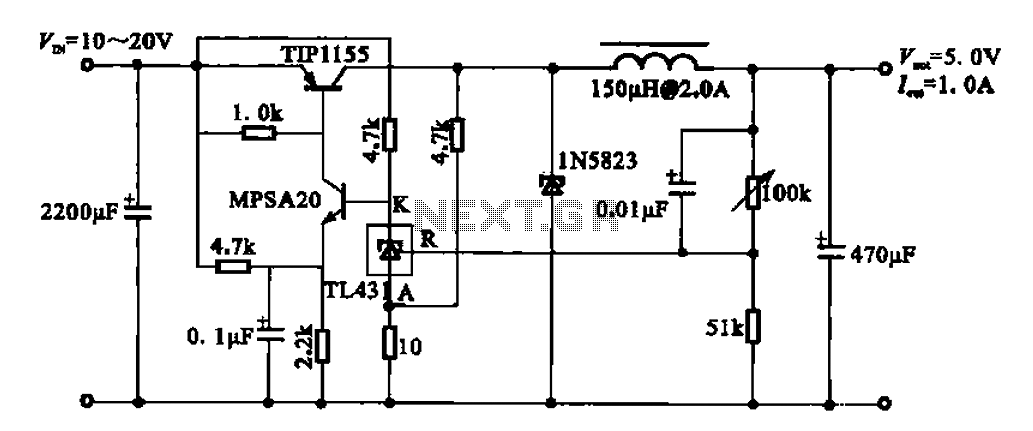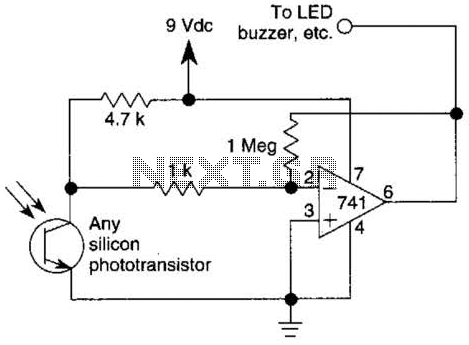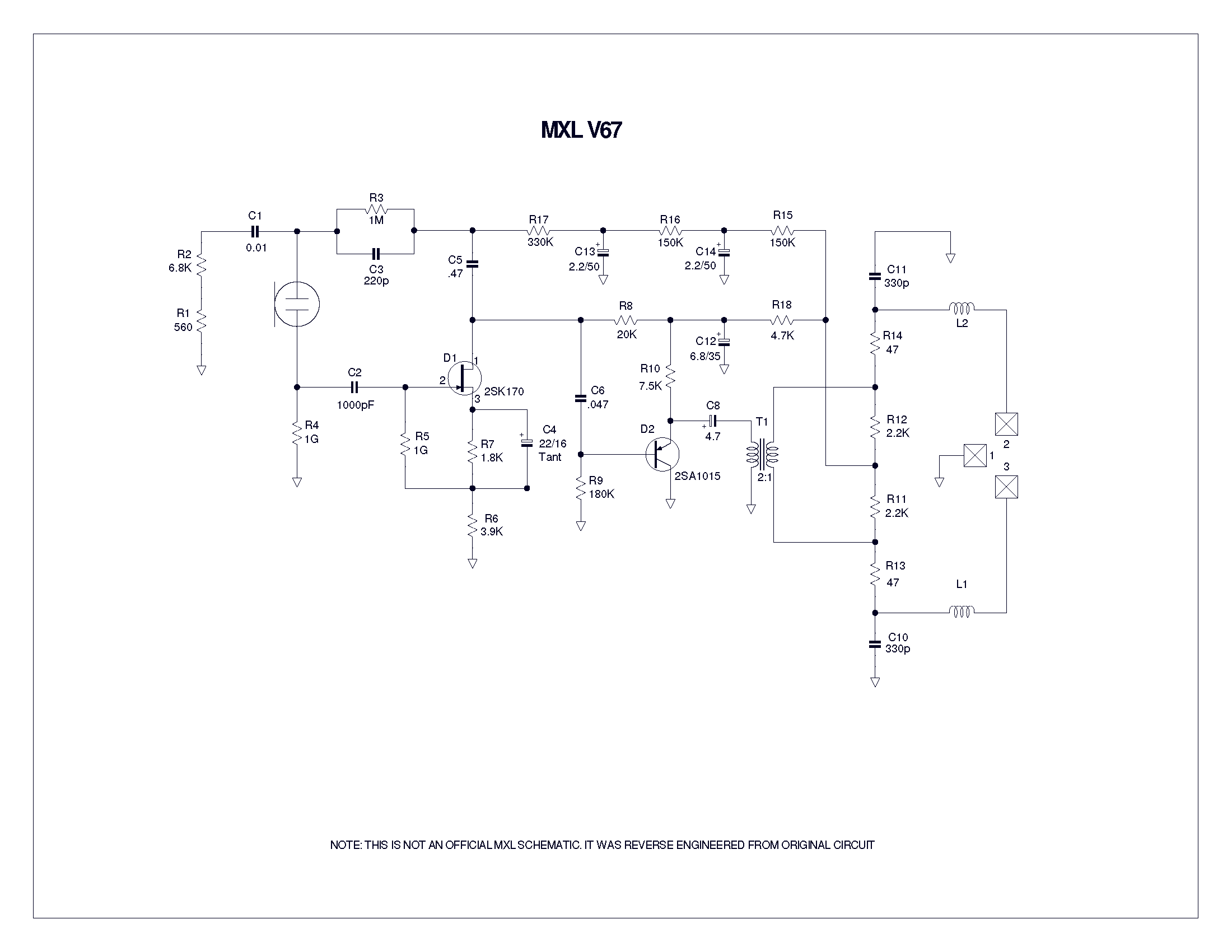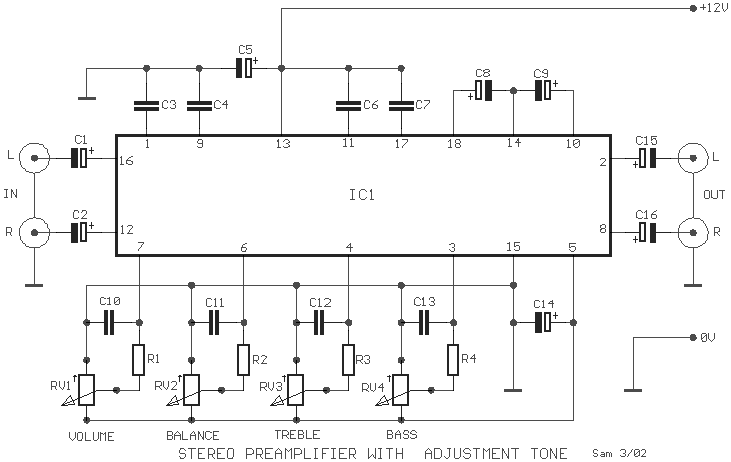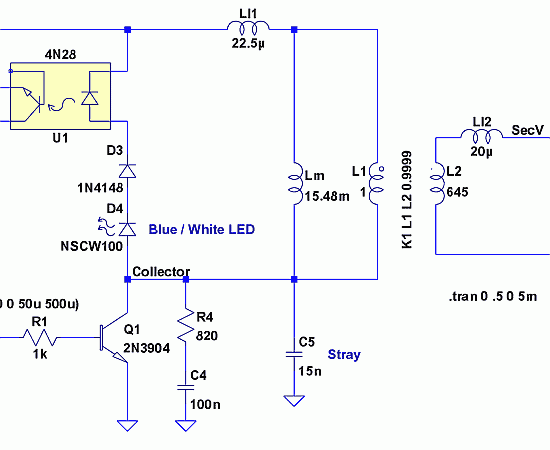
LED Indicator Light Circuit diagram
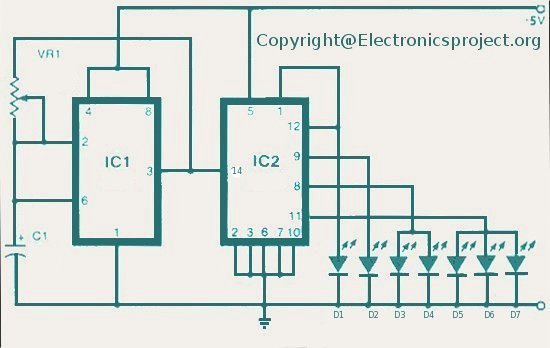
The LED indicator in this project can be used for bike indicators or car direction indicators. A 555 timer and a BCD 7490 are utilized along with several resistors, exceeding 100 in total across various electronic projects.
The circuit employs a 555 timer configured in astable mode to generate a pulse-width modulation signal, which controls the LED indicator's blinking pattern. The frequency of the blinking can be adjusted by varying the resistors and capacitors connected to the timer. This flexibility allows for customization of the blinking rate to suit specific requirements for visibility and signaling.
The BCD 7490, a binary-coded decimal counter, is integrated into the design to manage the timing and sequencing of the LED indicators. It counts the pulses generated by the 555 timer and can drive multiple LEDs in a sequence, enhancing the visual indication for direction signaling. The outputs of the BCD 7490 can be connected to various LEDs, ensuring that the indicators operate in a clear and recognizable manner.
Resistors in the circuit are crucial for limiting current to the LEDs, preventing damage and ensuring longevity. The selection of these resistors is based on the forward voltage and current ratings of the LEDs used. Additionally, the circuit may include capacitors for smoothing the power supply and reducing noise, which can improve the performance and reliability of the indicator system.
Overall, this project demonstrates a practical application of basic electronic components, showcasing how a combination of timers, counters, and resistors can create an effective signaling mechanism for vehicles.LED indicator in this project can be use in the bike indicator or car direction indicator. Time 555 and BCD 7490 are use with few resistors more than 100+ electronics projects. 🔗 External reference
The circuit employs a 555 timer configured in astable mode to generate a pulse-width modulation signal, which controls the LED indicator's blinking pattern. The frequency of the blinking can be adjusted by varying the resistors and capacitors connected to the timer. This flexibility allows for customization of the blinking rate to suit specific requirements for visibility and signaling.
The BCD 7490, a binary-coded decimal counter, is integrated into the design to manage the timing and sequencing of the LED indicators. It counts the pulses generated by the 555 timer and can drive multiple LEDs in a sequence, enhancing the visual indication for direction signaling. The outputs of the BCD 7490 can be connected to various LEDs, ensuring that the indicators operate in a clear and recognizable manner.
Resistors in the circuit are crucial for limiting current to the LEDs, preventing damage and ensuring longevity. The selection of these resistors is based on the forward voltage and current ratings of the LEDs used. Additionally, the circuit may include capacitors for smoothing the power supply and reducing noise, which can improve the performance and reliability of the indicator system.
Overall, this project demonstrates a practical application of basic electronic components, showcasing how a combination of timers, counters, and resistors can create an effective signaling mechanism for vehicles.LED indicator in this project can be use in the bike indicator or car direction indicator. Time 555 and BCD 7490 are use with few resistors more than 100+ electronics projects. 🔗 External reference
